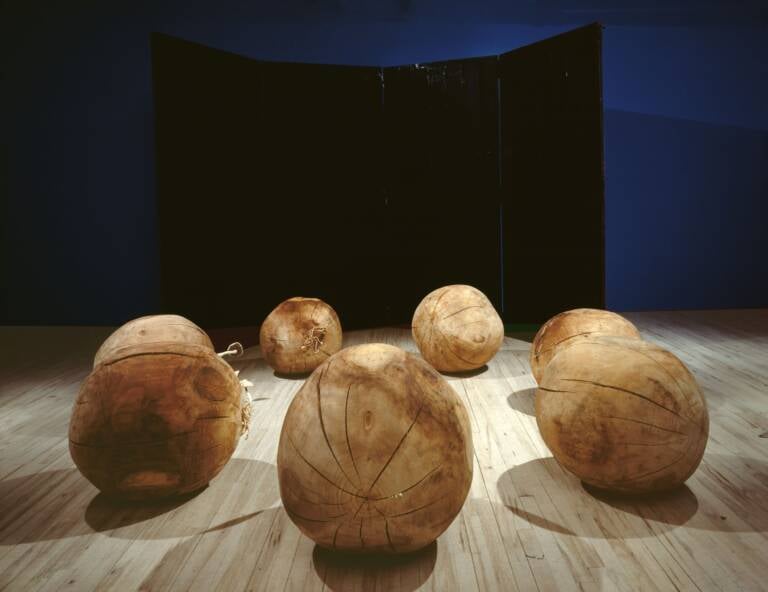The Louise Bourgeois exhibition Gathering Wool is currently on view at Hauser & Wirth in New York, running from November 6th, 2025 to January 24th, 2026. This exhibition offers a deep exploration of Bourgeois’s engagement with abstraction, highlighting the ways her work navigates emotional, psychological, and formal territories within the context of postwar art.
Postwar art and abstraction in Bourgeois’s practice
Gathering Wool examines the artist’s complex relationship with abstraction through late sculptures, reliefs, and works on paper, many of which have never been publicly shown before. The exhibition pairs these with earlier works to illuminate the consistency of Bourgeois’s themes and the development of her symbolic abstract language. The show takes its title from a 1990 work, Gathering Wool, a precursor to her celebrated Cells series, where seven wooden spheres arranged before a tall semicircular screen evoke a contemplative, daydreaming state—the mental space in which Bourgeois experimented with form and material.
Key works and concepts
The exhibition opens with Twosome (1991), a mechanical installation featuring a small tank moving along a track inside a larger tank, symbolizing the mother-child relationship. Nearby, a video excerpt from her 1978 performance A Fashion Show of Body Parts conveys themes of separation and attachment, demonstrating how the emotional intensity in her figurative works informs her abstract explorations.
Other notable pieces include Untitled (With Hand) (1989), where a child-like arm emerges from a sphere, and Mamelles (1991), a frieze of bronze breasts from which water flows. In Le Défi II (1992), light emanates from carefully arranged glass elements. Across these works, Bourgeois probes the boundaries between container and contained, past and present, and conscious and unconscious realms.
On the upper floors, her more abstract works feature stacked forms and vertical progressions. These arrangements reflect the artist’s attempt to impose order on emotional chaos, with repetition, precarious balances, and interlocking shapes embodying obsession, fragility, and protection against abandonment.
Gathering Wool reaffirms Louise Bourgeois’s significance in postwar art as an artist who consistently merged material experimentation with emotional and psychological insight, crafting a singular abstract language that resonates across decades.
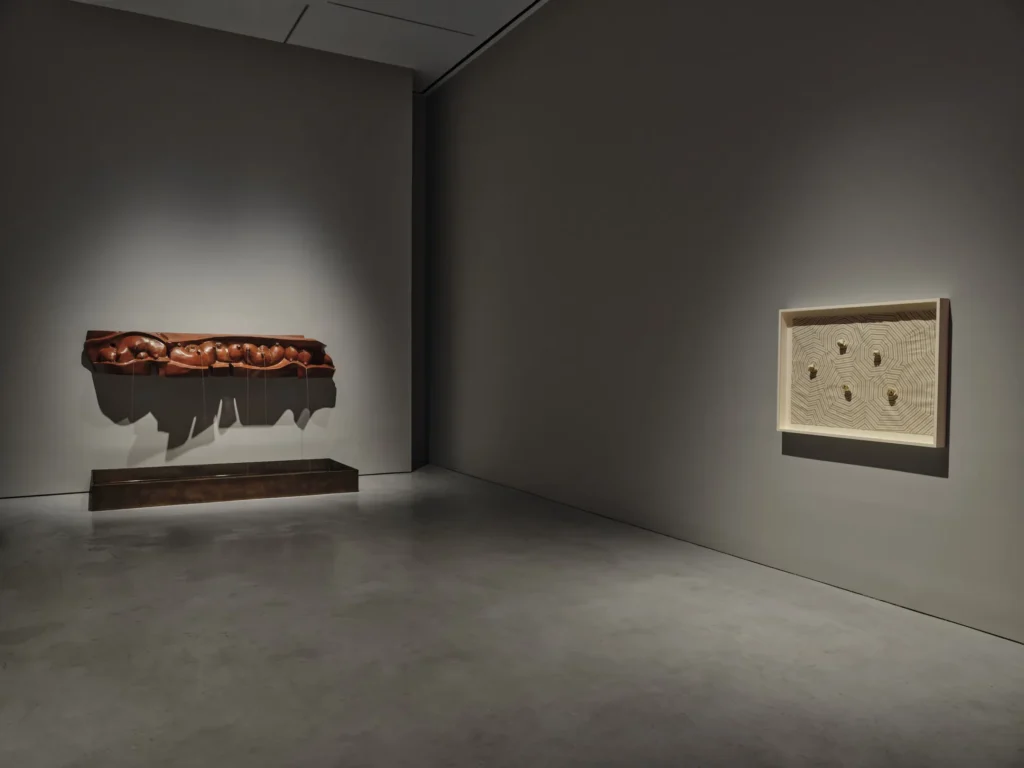
Courtesy of THE EASTON FOUNDATION and HAUSER & WIRTH, Photography by THOMAS BARRATT
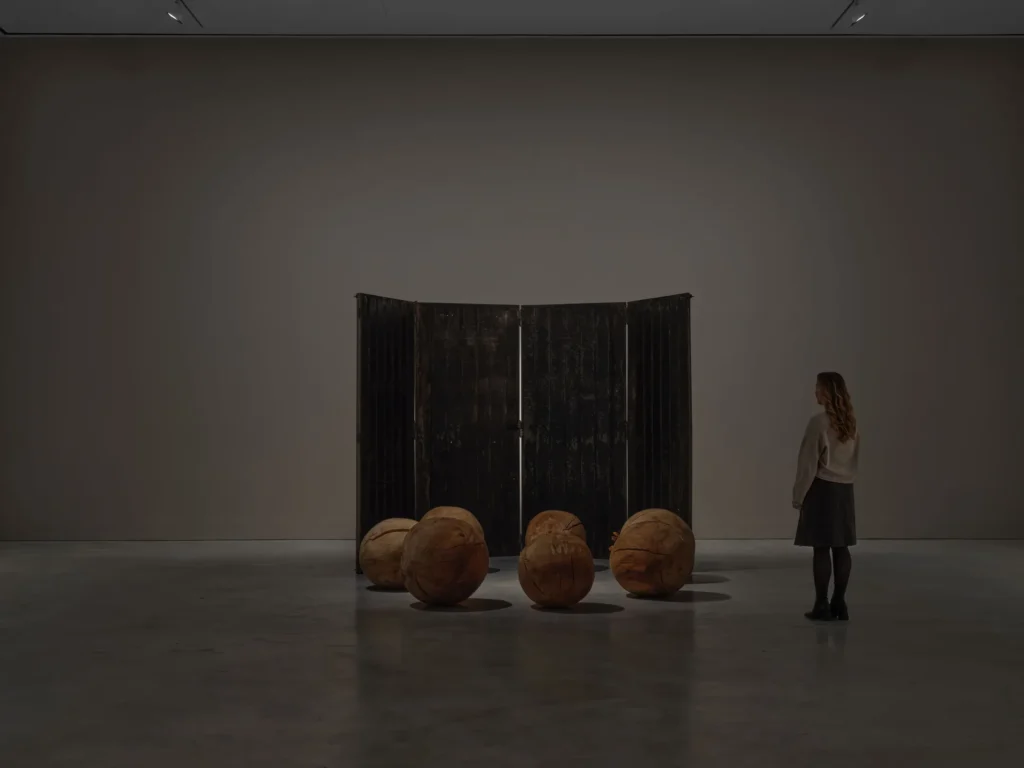
Courtesy of THE EASTON FOUNDATION and HAUSER & WIRTH, Photography by THOMAS BARRATT
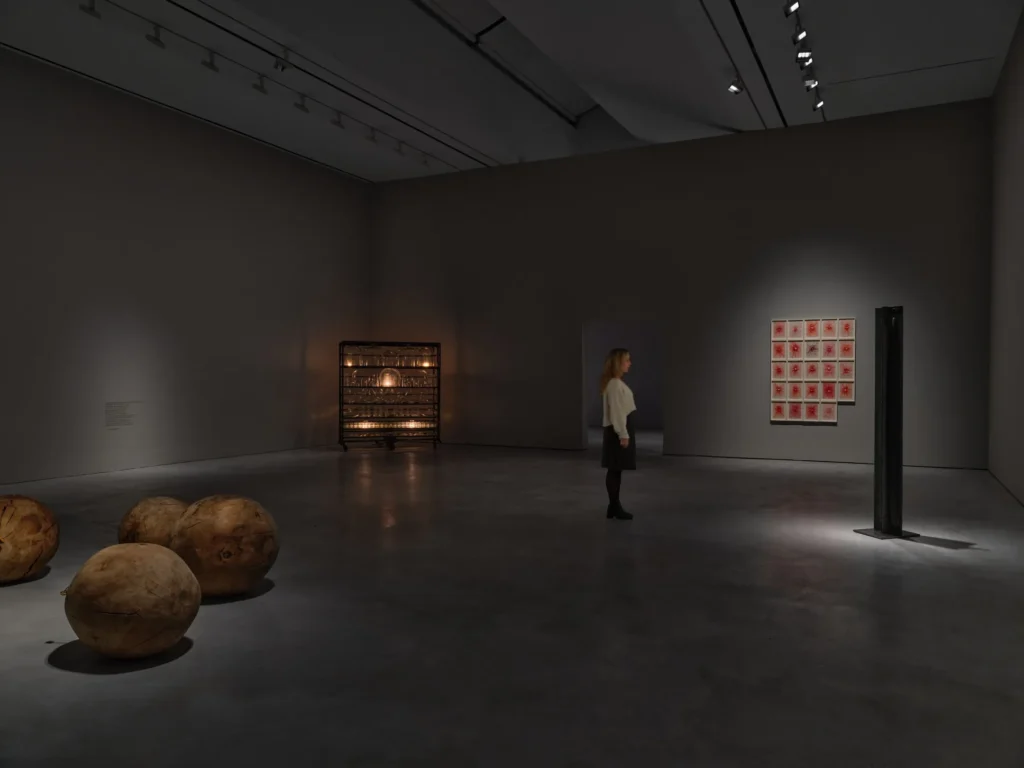
Courtesy of THE EASTON FOUNDATION and HAUSER & WIRTH, Photography by THOMAS BARRATT

Courtesy of THE EASTON FOUNDATION and HAUSER & WIRTH, Photography by THOMAS BARRATT
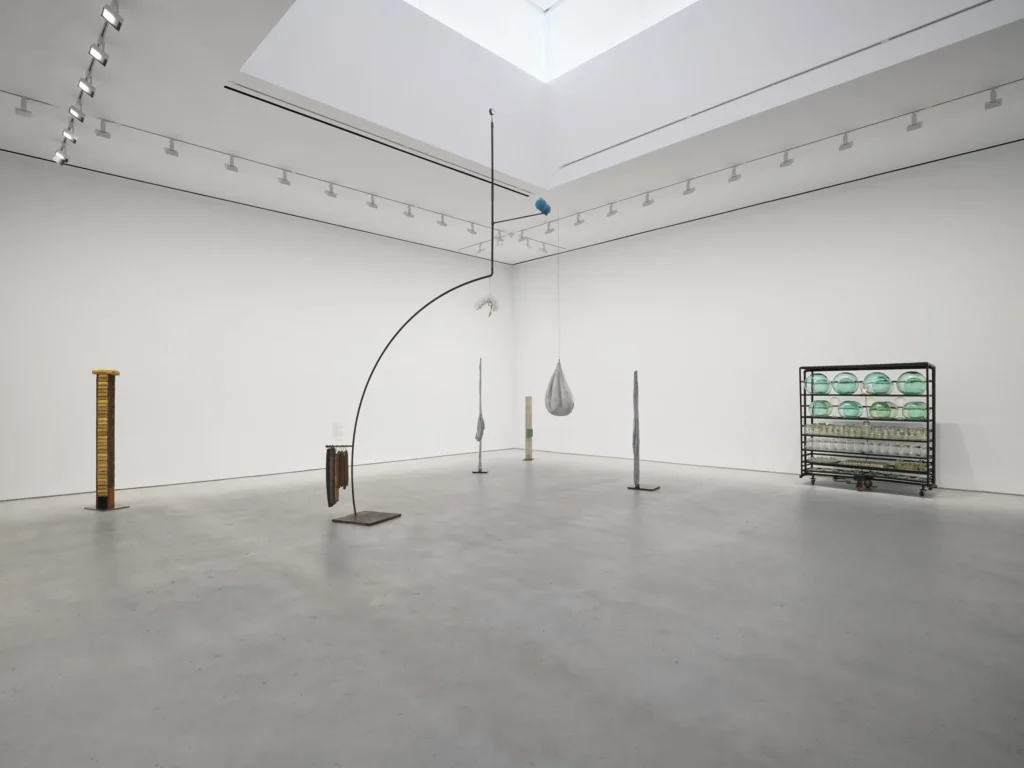
Courtesy of THE EASTON FOUNDATION and HAUSER & WIRTH, Photography by THOMAS BARRATT
